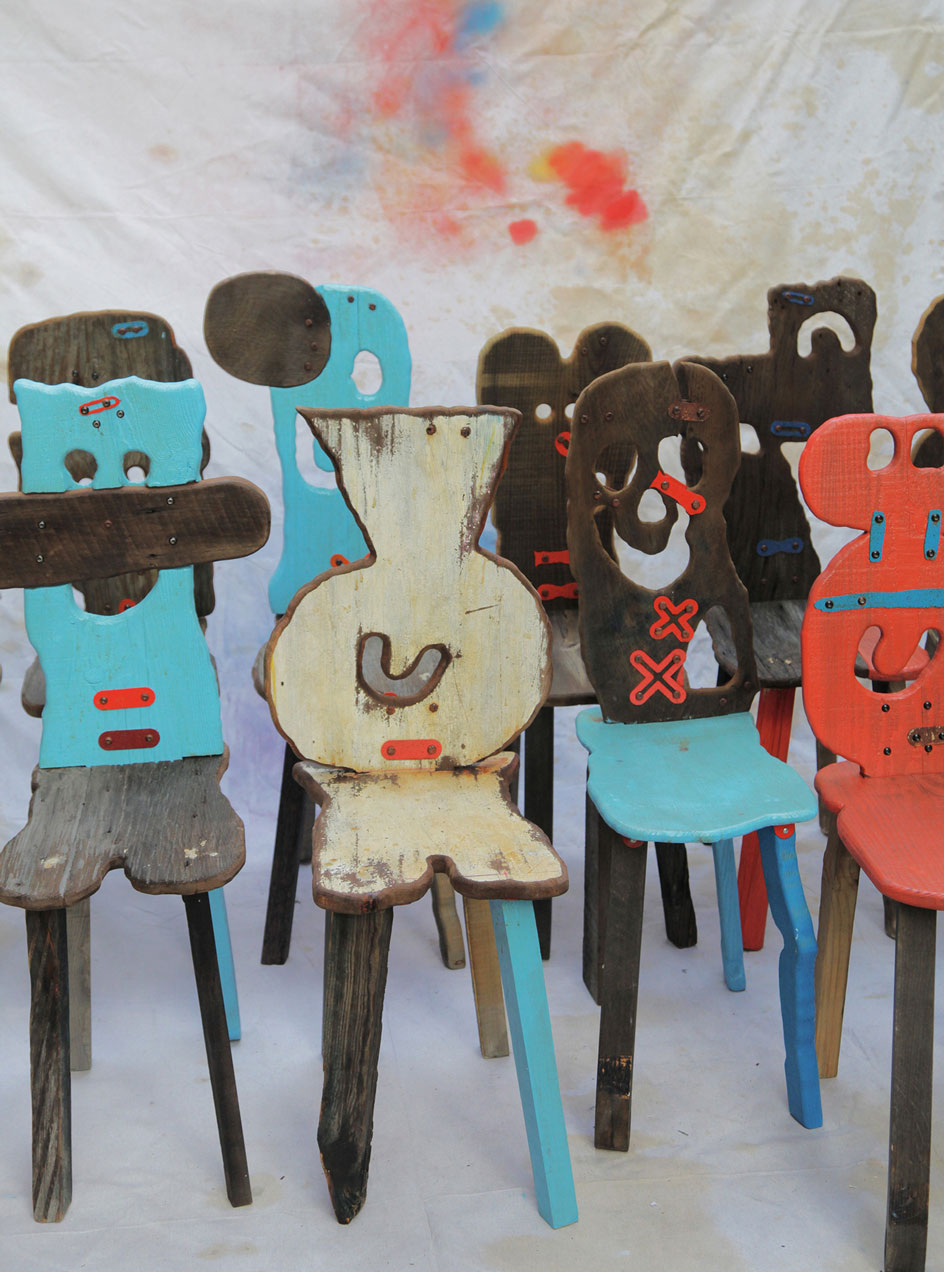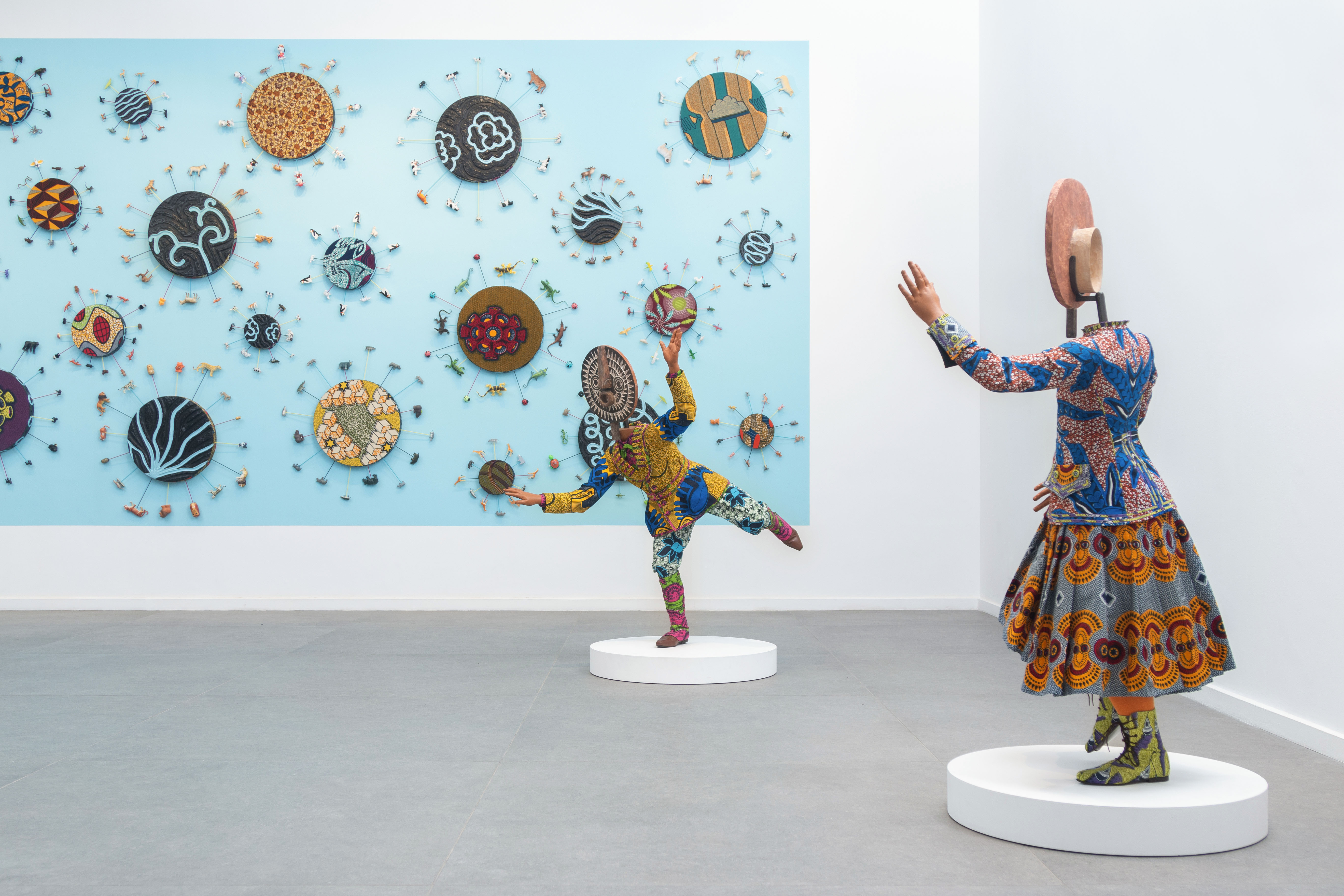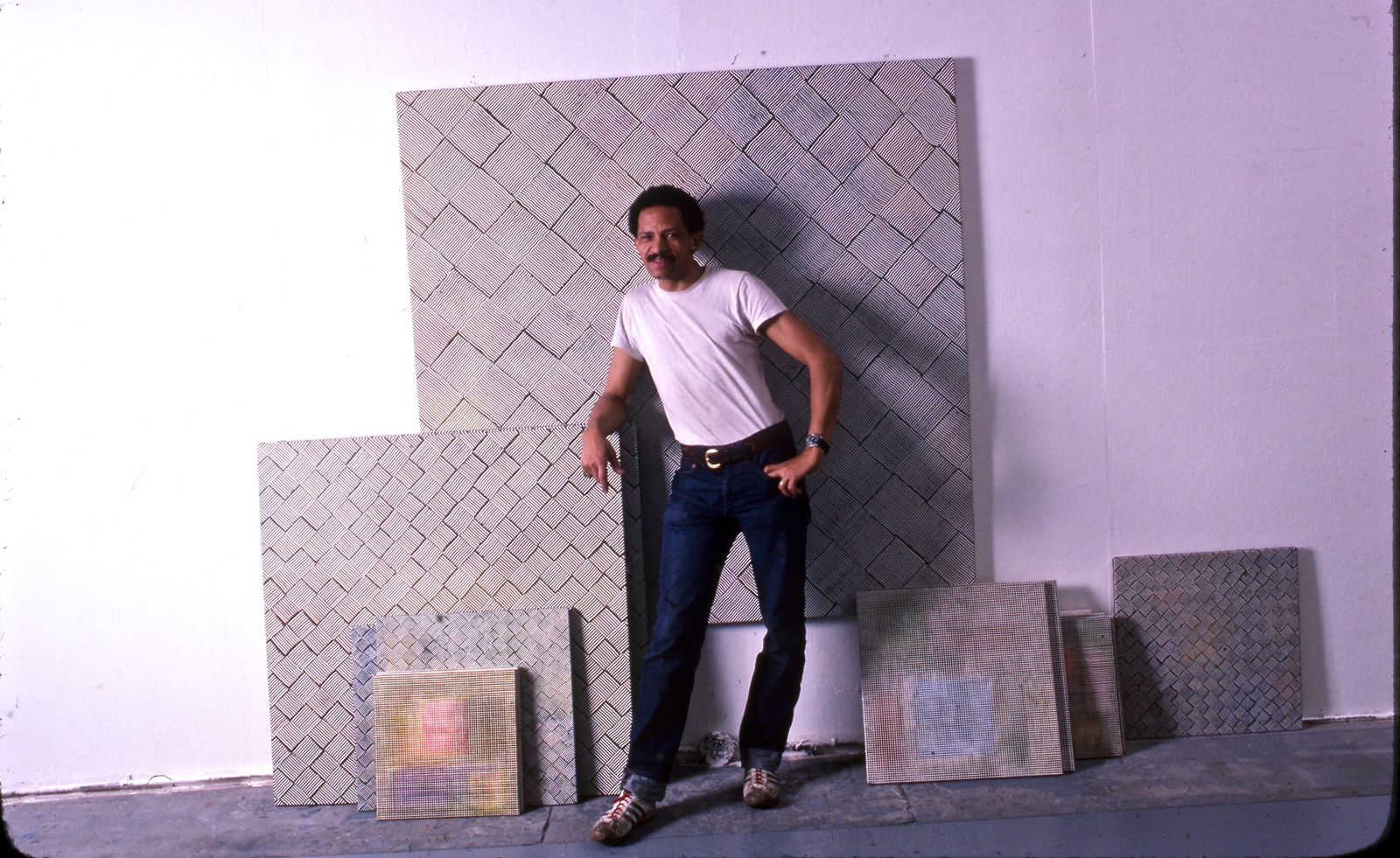The wit and whimsy of Serban Ionescu’s ‘objects of dormant utility’
The vibrant works of Romanian-born Serban Ionescu cut across the border lines between design and art, as featured in the April 2021 issue of Wallpaper*

Inspired by a summer job as a model maker at an architectural firm, Serban Ionescu went on to study architecture at Pratt Institute, where he thrived creatively and discovered a fondness for the work of Lebbeus Woods and John Hejduk. ‘But the negative side of architecture school is that it builds up this amazing kind of naivety that you’re going to change the world,’ he reflects. Graduating in 2007, he was soon disheartened by the difficulty of making a dent in the profession, and set his sights on being an artist instead.
Growing up in his native Romania, Ionescu could draw before he learned to speak (between the ages of three and five, he drew exclusively in aerial view, taking after his engineer parents who taught him about plan, elevation and section). Drawing became his way of unlearning the lessons of architectural school. He drew and painted and sculpted, bringing the three together in his 2016 Pinocchio Chair – pieces of plywood, painted baby blue, bubblegum pink and bright red, and with the likeness of the puppet carved into the seatback.

Aza, showing as part of the group exhibition ‘Objects: USA 2020’ at R & Company New York
It established a cartoonish style that has characterised Ionescu’s work since, a combination of design and art that makes him one to watch on the creative scene.
Today, the now Brooklyn-based Ionescu often works with sheets of powder-coated steel, and his output stretches across scales: the largest, Chapel for an Apple (2020), is a 20ft-tall folly nestled in a field in Hudson in upstate New York. Its outline evokes both a prototypical chapel and the area’s industrial heritage; there’s a viewing platform, an apple-shaped entrance and Lego-like colours for a dash of whimsy. Among the smallest are his ICES (In Case of Emergency Sculptures), with a rough resemblance to Swiss army knives. These are ‘objects of dormant utility’, says Ionescu, pointing to the uncertainties of the pandemic era and the evolving definitions of design and art.

The 20ft-tall Chapel for an Apple, on a hillside in Hudson, originated as an improvised paper model in Ionescu’s studio in Red Hook, Brooklyn
His rising stature is reflected by his inclusion in the group show ‘Objects: USA 2020’, currently on at New York’s R & Company. One of 50 contemporary ‘object makers’ to participate, Ionescu created a new piece, Aza, ‘furniture, architecture and sculpture crashing into one’. The gallery’s principal, Zesty Meyers, has worked with Ionescu for two years. ‘Every time you look at his work, you find new interesting details,’ Meyers enthuses. ‘The mix of colour, architecture and abstract forms create relationships in a way that I have never seen before.’
Meanwhile, Ionescu’s first solo exhibition in Europe is about to open at Antwerp’s Everyday Gallery. Titled ‘In Order of Appearance’, it features smaller-scale pieces that show ‘how a cast of characters becomes things, becomes furniture’. Stuck in Toronto for ten months during the pandemic, Ionescu set out to create at least one drawing a day and has since accumulated more than 500. What began as a personal project is now poised to occupy gallery walls, offering an opportunity for viewers to glimpse into his fertile imagination. ‘It’s going to show a bit more of how things come together,’ he says.

The anthropomorphic Folk sculptural chairs are made from wood and steel, with whimsical expressions carved into the seatbacks
INFORMATION
This article originally featured in the April 2021 issue of Wallpaper* (W*264), available for free download
‘In Order of Appearance’, 20 March – 27 April 2021, Everyday Gallery, Jos Smolderenstraat 18, Antwerp. everydaygallery.art
‘Objects: USA 2020’, until 31 July, R & Company, 64 White Street, New York. r-and-company.com
serbanionescu.com
Receive our daily digest of inspiration, escapism and design stories from around the world direct to your inbox.
TF Chan is a former editor of Wallpaper* (2020-23), where he was responsible for the monthly print magazine, planning, commissioning, editing and writing long-lead content across all pillars. He also played a leading role in multi-channel editorial franchises, such as Wallpaper’s annual Design Awards, Guest Editor takeovers and Next Generation series. He aims to create world-class, visually-driven content while championing diversity, international representation and social impact. TF joined Wallpaper* as an intern in January 2013, and served as its commissioning editor from 2017-20, winning a 30 under 30 New Talent Award from the Professional Publishers’ Association. Born and raised in Hong Kong, he holds an undergraduate degree in history from Princeton University.
-
 How We Host: Interior designer Heide Hendricks shows us how to throw the ultimate farmhouse fête
How We Host: Interior designer Heide Hendricks shows us how to throw the ultimate farmhouse fêteThe designer, one half of the American design firm Hendricks Churchill, delves into the art of entertaining – from pasta to playlists
-
 Arbour House is a north London home that lies low but punches high
Arbour House is a north London home that lies low but punches highArbour House by Andrei Saltykov is a low-lying Crouch End home with a striking roof structure that sets it apart
-
 25 of the best beauty launches of 2025, from transformative skincare to offbeat scents
25 of the best beauty launches of 2025, from transformative skincare to offbeat scentsWallpaper* beauty editor Mary Cleary selects her beauty highlights of the year, spanning skincare, fragrance, hair and body care, make-up and wellness
-
 Rolf Sachs’ largest exhibition to date, ‘Be-rühren’, is a playful study of touch
Rolf Sachs’ largest exhibition to date, ‘Be-rühren’, is a playful study of touchA collection of over 150 of Rolf Sachs’ works speaks to his preoccupation with transforming everyday objects to create art that is sensory – both emotionally and physically
-
 Architect Erin Besler is reframing the American tradition of barn raising
Architect Erin Besler is reframing the American tradition of barn raisingAt Art Omi sculpture and architecture park, NY, Besler turns barn raising into an inclusive project that challenges conventional notions of architecture
-
 What is recycling good for, asks Mika Rottenberg at Hauser & Wirth Menorca
What is recycling good for, asks Mika Rottenberg at Hauser & Wirth MenorcaUS-based artist Mika Rottenberg rethinks the possibilities of rubbish in a colourful exhibition, spanning films, drawings and eerily anthropomorphic lamps
-
 San Francisco’s controversial monument, the Vaillancourt Fountain, could be facing demolition
San Francisco’s controversial monument, the Vaillancourt Fountain, could be facing demolitionThe brutalist fountain is conspicuously absent from renders showing a redeveloped Embarcadero Plaza and people are unhappy about it, including the structure’s 95-year-old designer
-
 See the fruits of Niki de Saint Phalle and Jean Tinguely's creative and romantic union at Hauser & Wirth Somerset
See the fruits of Niki de Saint Phalle and Jean Tinguely's creative and romantic union at Hauser & Wirth SomersetAn intimate exhibition at Hauser & Wirth Somerset explores three decades of a creative partnership
-
 Technology, art and sculptures of fog: LUMA Arles kicks off the 2025/26 season
Technology, art and sculptures of fog: LUMA Arles kicks off the 2025/26 seasonThree different exhibitions at LUMA Arles, in France, delve into history in a celebration of all mediums; Amy Serafin went to explore
-
 Inside Yinka Shonibare's first major show in Africa
Inside Yinka Shonibare's first major show in AfricaBritish-Nigerian artist Yinka Shonibare is showing 15 years of work, from quilts to sculptures, at Fondation H in Madagascar
-
 Inside Jack Whitten’s contribution to American contemporary art
Inside Jack Whitten’s contribution to American contemporary artAs Jack Whitten exhibition ‘Speedchaser’ opens at Hauser & Wirth, London, and before a major retrospective at MoMA opens next year, we explore the American artist's impact